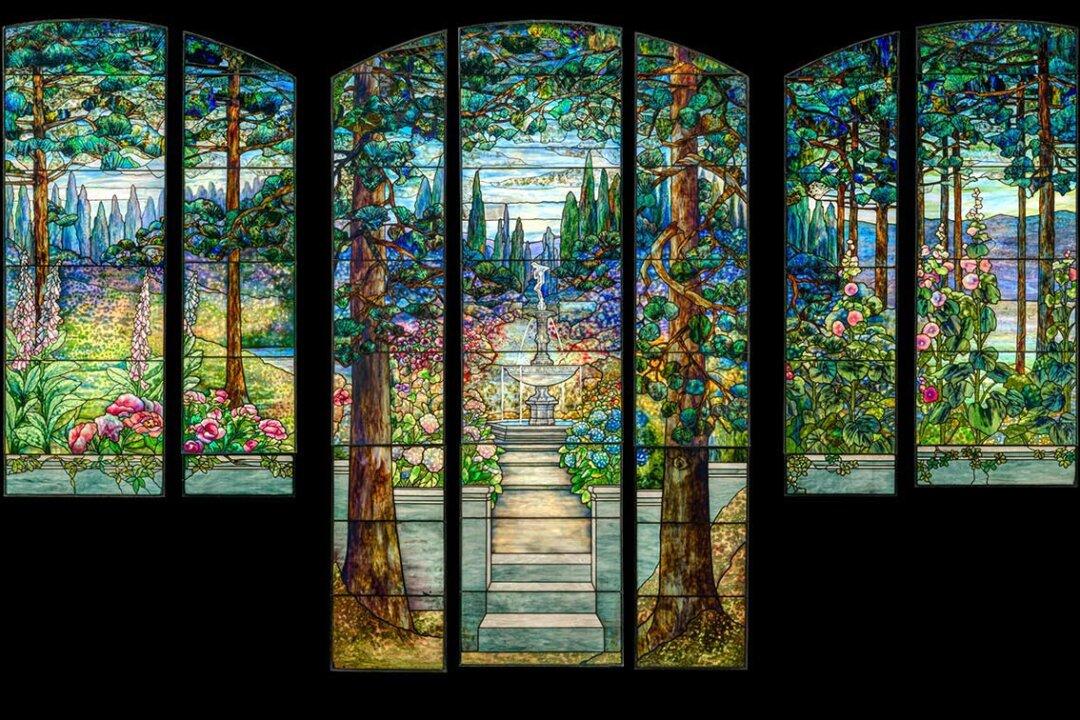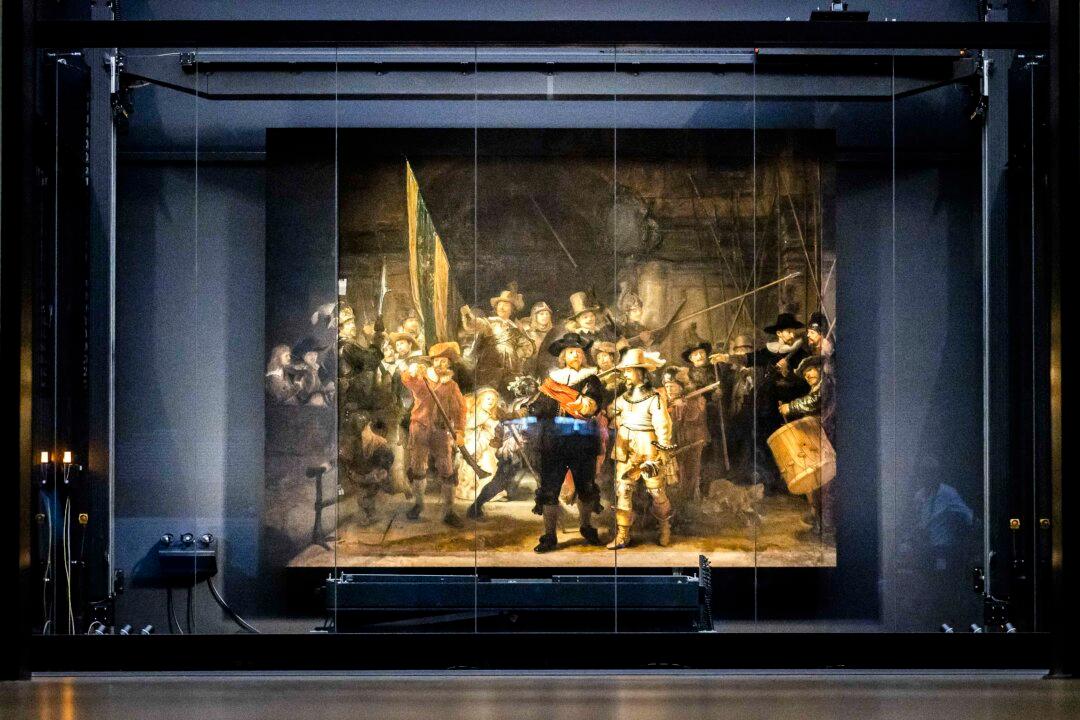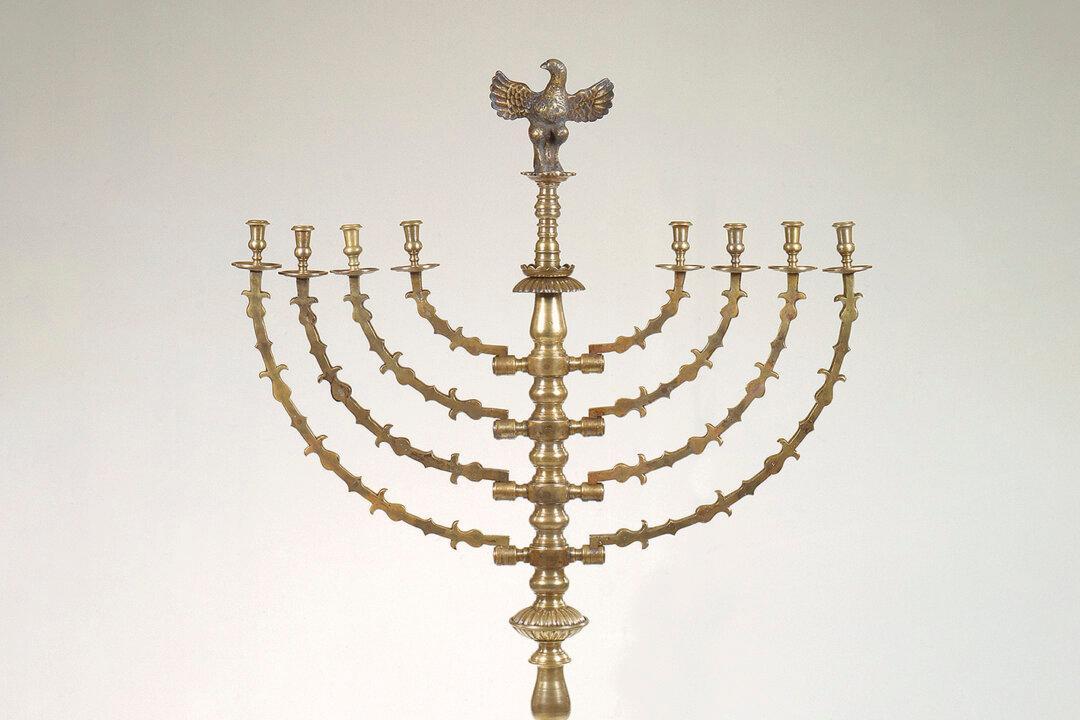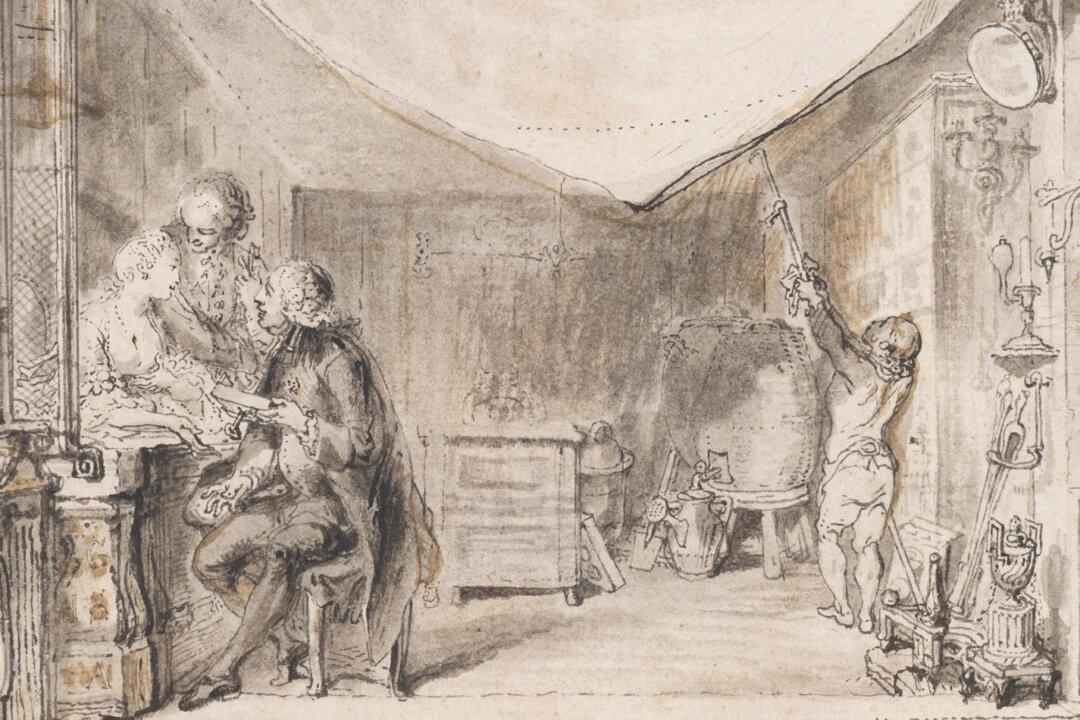There is a new garden at the Metropolitan Museum of Art! It features flowers in season from spring through summer, but they are always in bloom.
This feat is achievable because the flowers are made of glass, specifically Favrile glass. They’re the decorative motifs in a monumental stained glass window. The window manufacturer was the American company Tiffany Studios, led by the great Louis Comfort Tiffany, but the origin of this window tells a previously overlooked story about remarkable women.
The magnificent three-part Garden Landscape window for Linden Hall was acquired by the Museum in December 2023 and put on view in November 2024. It is installed in the south end of the Charles Englehard Court, the vestibule to The Met’s American Wing.
Linden Hall Garden Scene
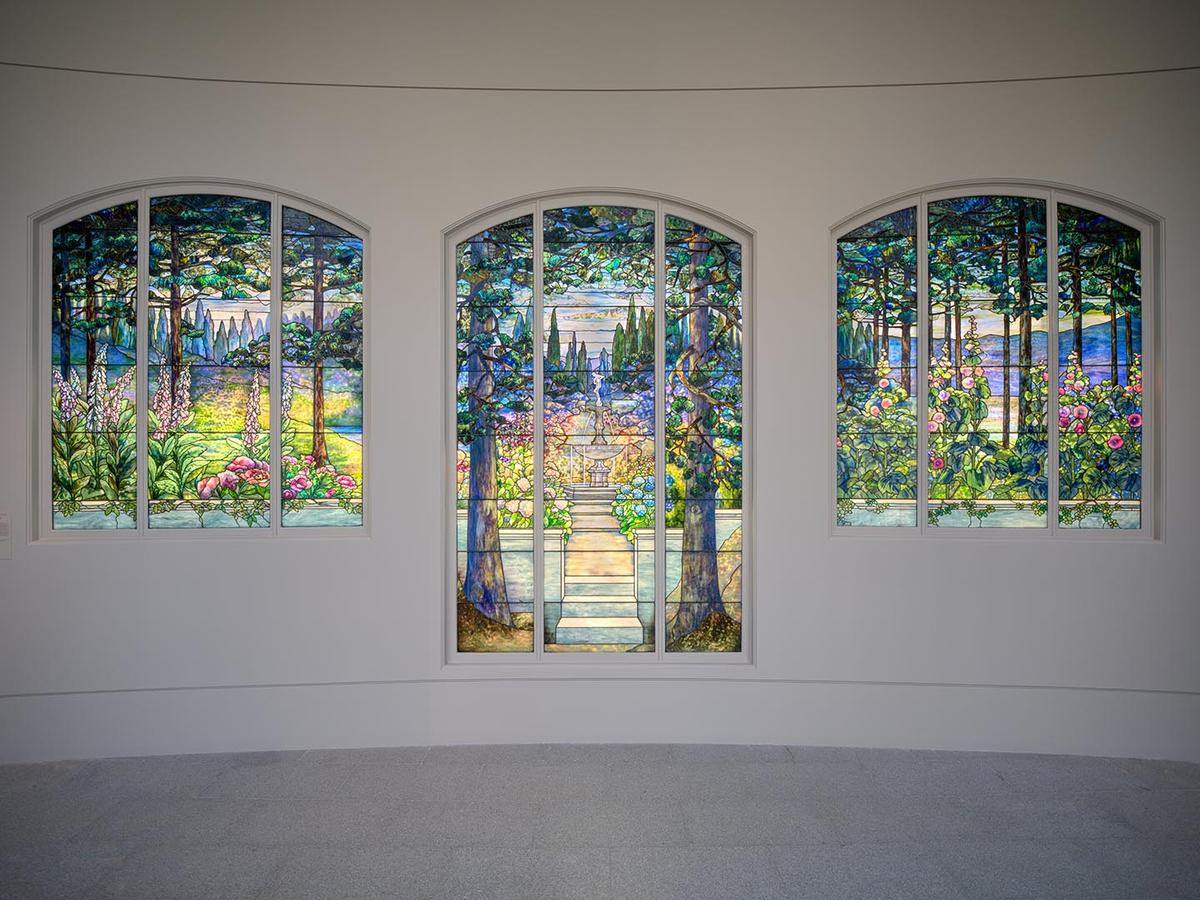
The window was created in 1912. The commissioner was Sarah B. Cochran (1857–1936), a businesswoman, philanthropist, and suffragist. Born into a poor farming family in Pennsylvania, she couldn’t go to school every day because she was unable to afford enough clothes. She worked as maid in the household of a wealthy coal industrialist and went on to marry his son. When widowed at a young age, Cochran was left in charge of her husband’s empire. She remained actively involved in these affairs into her 70s, successfully growing the business threefold, and was referred to as “the nation’s only coal queen.”
Inspired by British architecture, Cochran had a Tudor-style mansion built in Saint James Park in Dawson, Pennsylvania. Called Linden Hall, the grand home was built between 1911 and 1913 and contained more than 30 rooms, a railroad stop, and a custom Tiffany window for the stair landing. Cochran specifically requested the window’s subject: a garden scene that would refer to the actual landscape of the estate.
The designer of the Garden Landscape window was not Tiffany himself but Agnes Northrop (1857–1953), one of the company’s brilliant creatives for the construction of windows. She was a member of the self-styled “Tiffany Girls,” a group of extremely talented women responsible for some of the most acclaimed Tiffany lamps and art objects. Their accomplishments were lost to history for nearly a century, and it’s only in recent years that scholarship has shone a light on them.
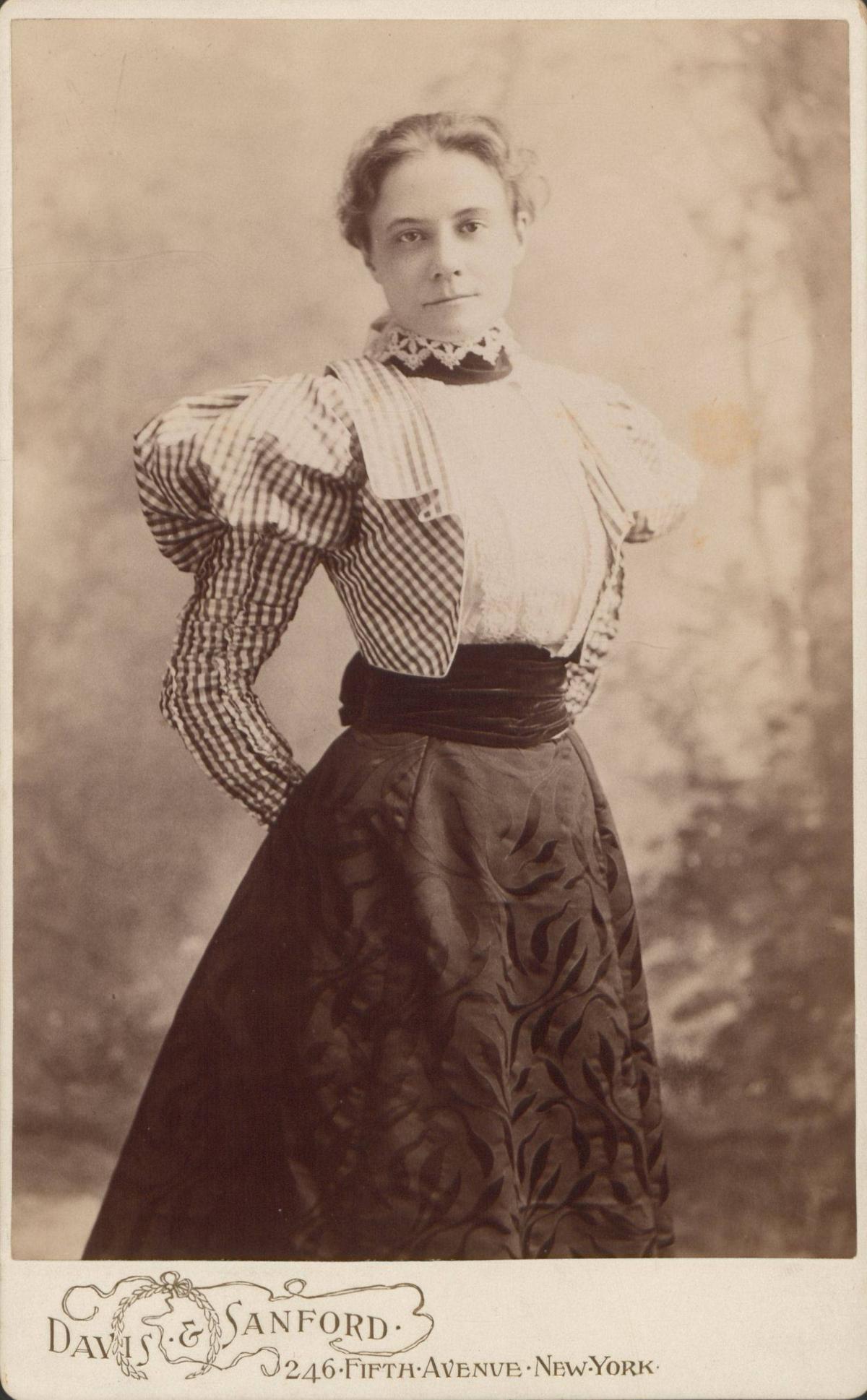
The studio founder was Louis C. Tiffany (1848–1933), son of Charles Lewis Tiffany, who had opened what is now the quintessential American brand, Tiffany & Co. The younger Tiffany oversaw a large portfolio of artistic companies, the best-known being Tiffany Studios (1902–1932), manufacturer of the Garden Landscape window for Linden Hall. This window is composed of Tiffany’s signature Favrile glass. This type of glass has an iridescent surface. The name derives from the old English word “fabrile,” which means “hand wrought.” The glass, characterized by deep richness, brilliance, and varied textures, was trademarked by Tiffany in 1894. The other great Tiffany innovation was using landscapes as subjects by themselves.
Northrop’s Illusionistic Designs
Northrop spent five decades with Tiffany companies. She was born in the Flushing neighborhood of Queens and died at the Gramercy Park Hotel at the age of 96. Introduced to Tiffany in 1884, she was immediately hired despite that she had no known formal artistic training. By the 1890s, she had achieved success at the firm and was highly respected. Northrop had a private studio; was given credit for some objects, including winning a silver medal at the 1900 Exposition Universelle in Paris; and was invited on a French sketching trip with Tiffany and the head of the Women’s Department.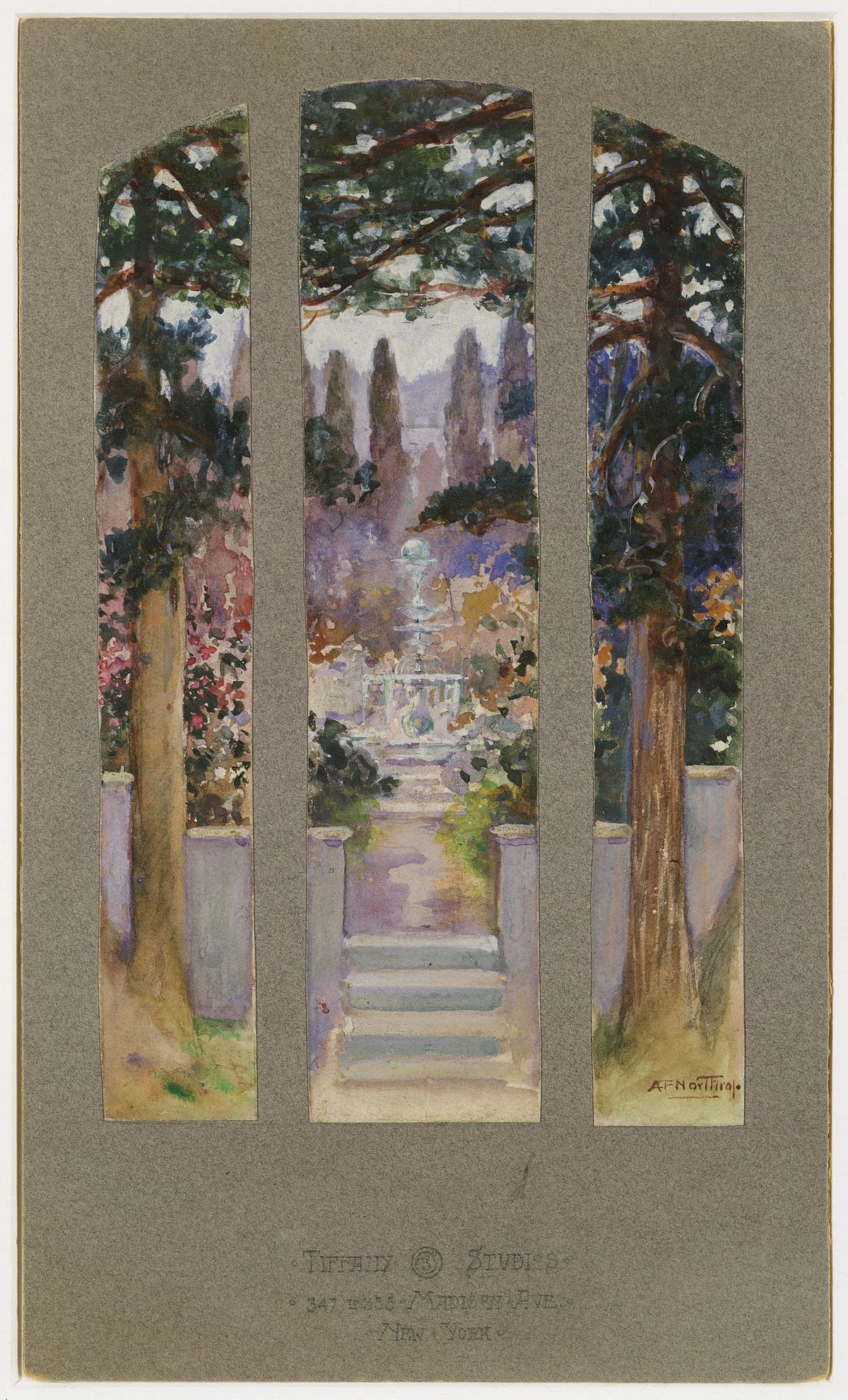
Known for illusionistic window designs with complex landscapes and rich florals, Northrop was solely responsible for the design of several of the firm’s most spectacular examples. The process began with an initial sketch of the scheme, for which she derived inspiration from a personal archive of botanic and historical subjects and her own observations of nature.
Once Tiffany approved the design, Northrop formed a more detailed rendering that was presented to the client. Their acceptance led to the next step of a cartoon at full scale depicting the specific sections for glass pieces. Afterward, individual glass was selected and cut. A window, which consisted of thousands of pieces, then went to the leading and enameling departments. Northrop’s authorship of the Garden Landscape window for Linden Hall is recognized because her design drawing for the central part is in The Met’s collection and signed by her.
This section of the window draws the viewer’s eye up marble steps to a central fountain surrounded by nasturtiums, poppies, and pink and blue hydrangeas. Beyond this is a long vista framed by pine trees. The time of day is a poetic twilight.
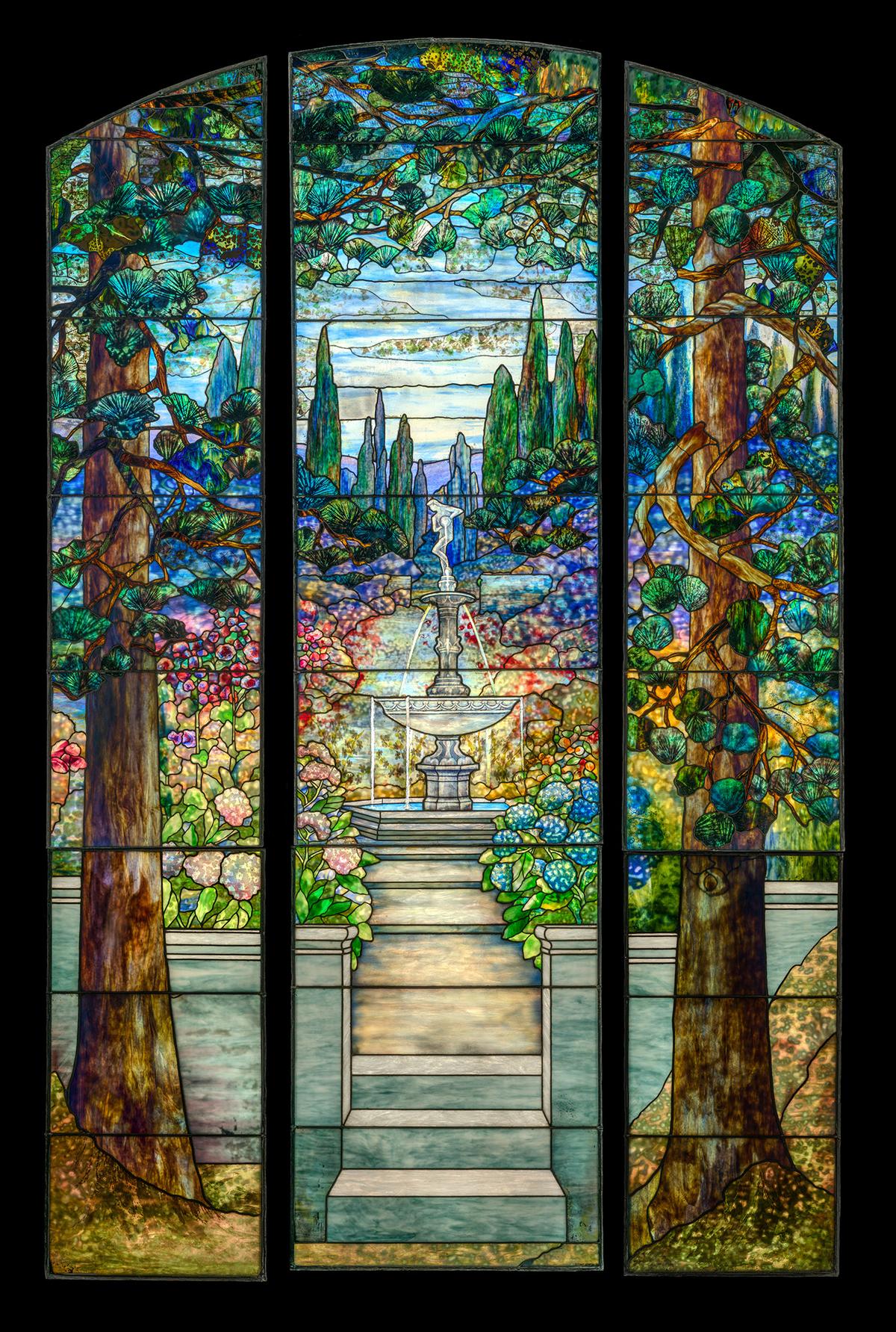
The two side panels feature corresponding vistas and flowers in the foreground. On the left are foxgloves and peonies, while on the right are hollyhocks. Tiffany thought the window was of such importance that he had it put on public view in his New York showroom before its installation at Linden Hall.
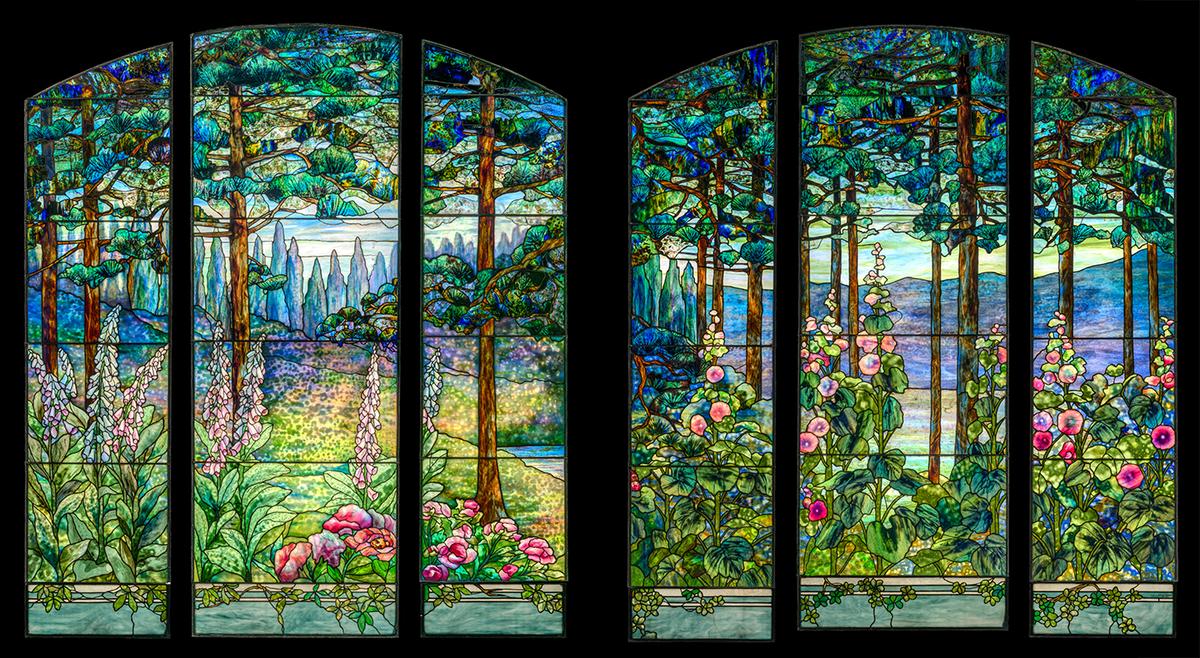
Now at The Met, the Garden Landscape window resides adjacent to another Tiffany treasure, “Autumn Landscape.” This majestic window from 1923 to 1924 shows fall foliage awash in late afternoon dappled sun. It was also commissioned for the stair landing of a mansion but was never installed. The window was instead donated shortly after it was completed to The Met. The multi-textured surface includes glass wrinkled when still molten and embedded confetti-like glass flakes. The design of this window is also attributed to Northrop.
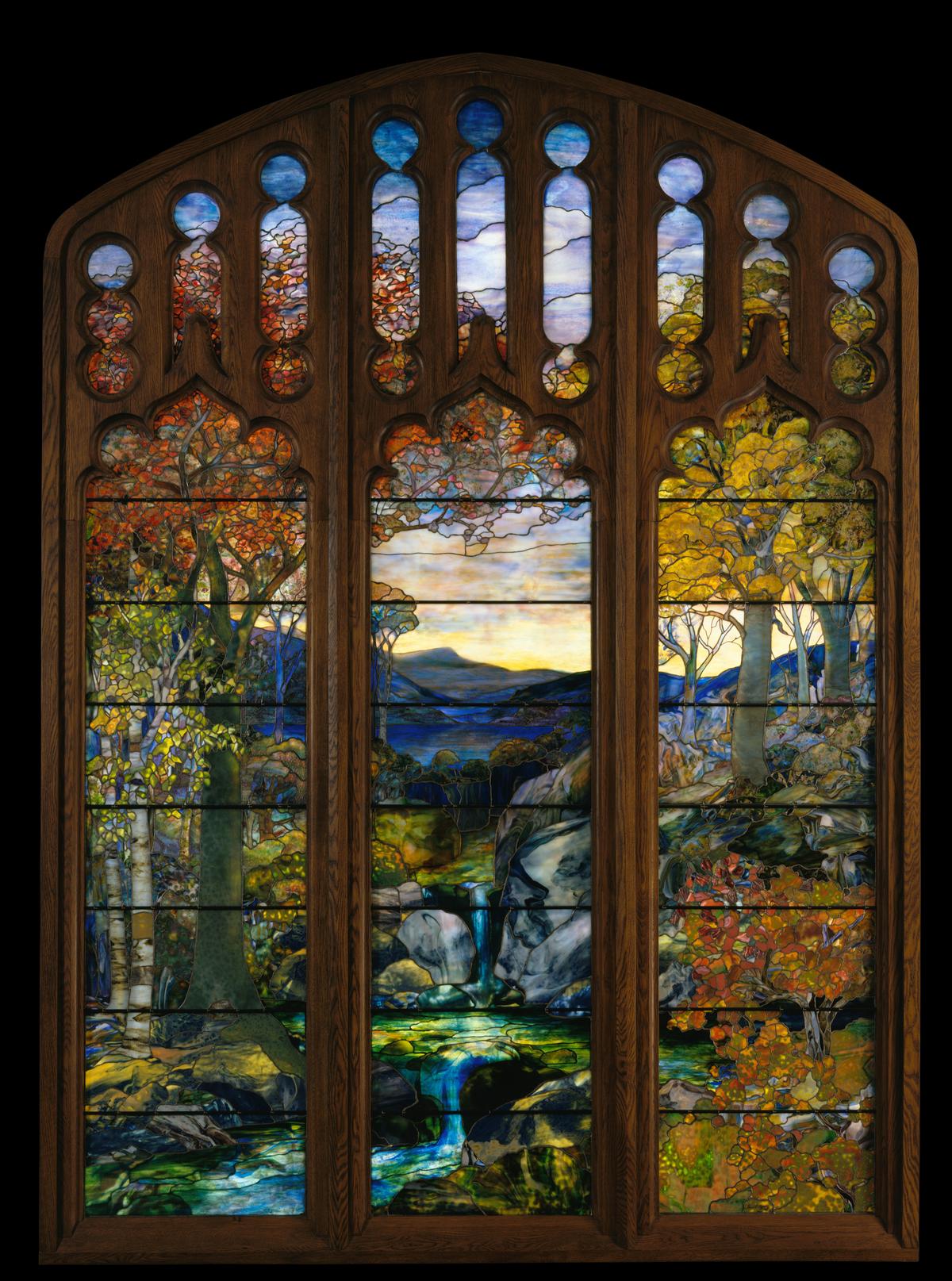
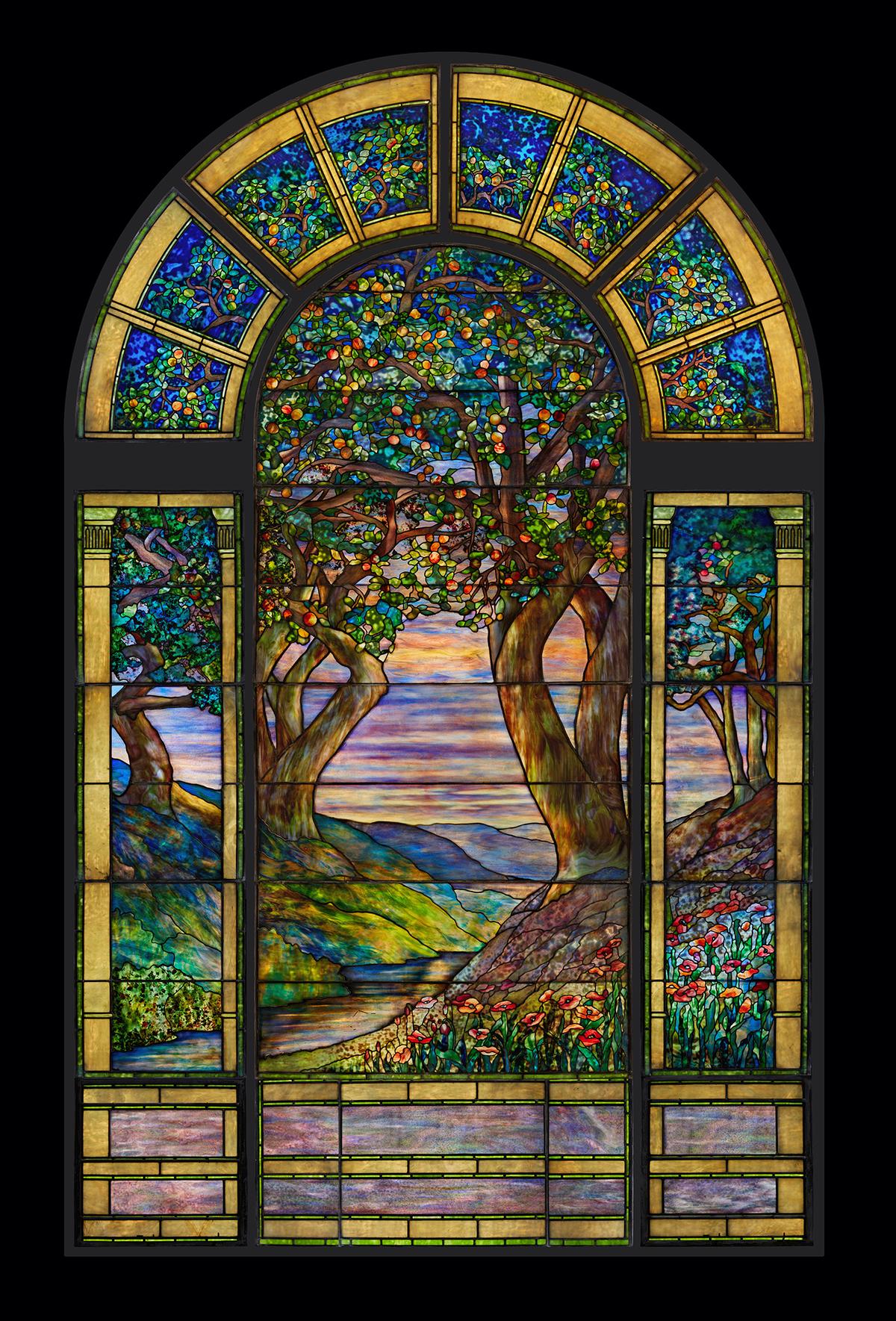
Tiffany leaded glass windows originated in 1880 and quickly became one of the most acclaimed media in American art. Northrop played a pivotal role in their success with her genius designs. The three-part Garden Landscape window is an immersive, Edenic landscape that the visiting public can now enjoy.

